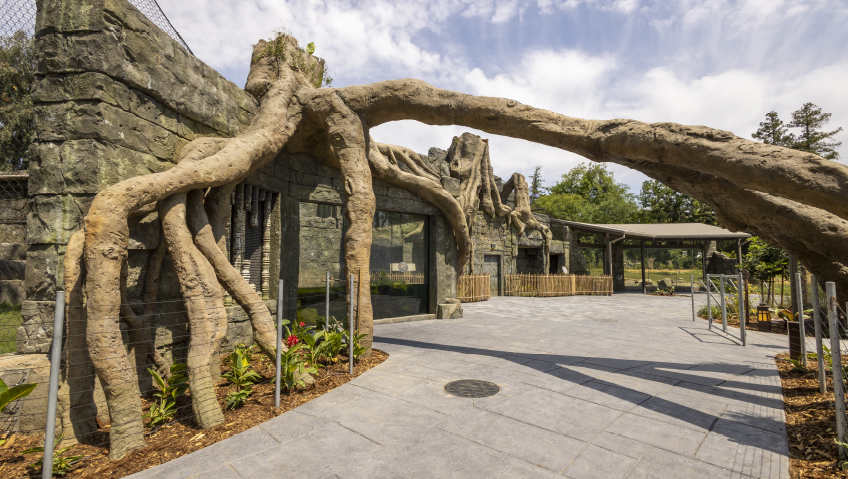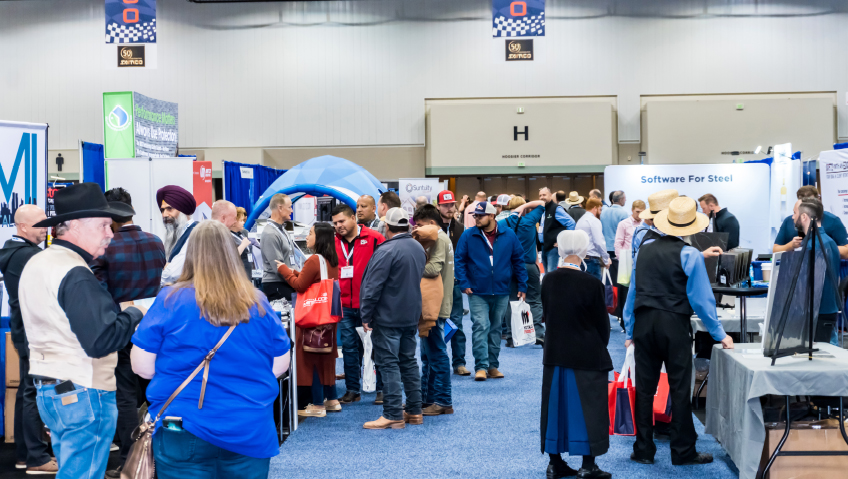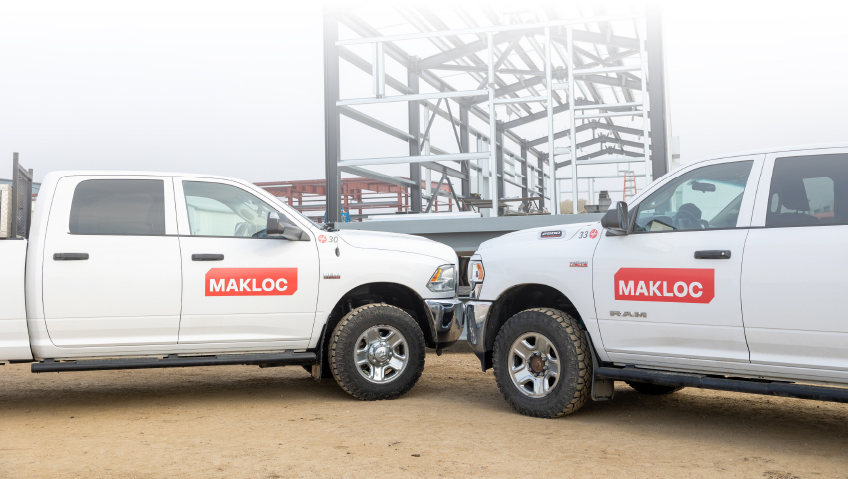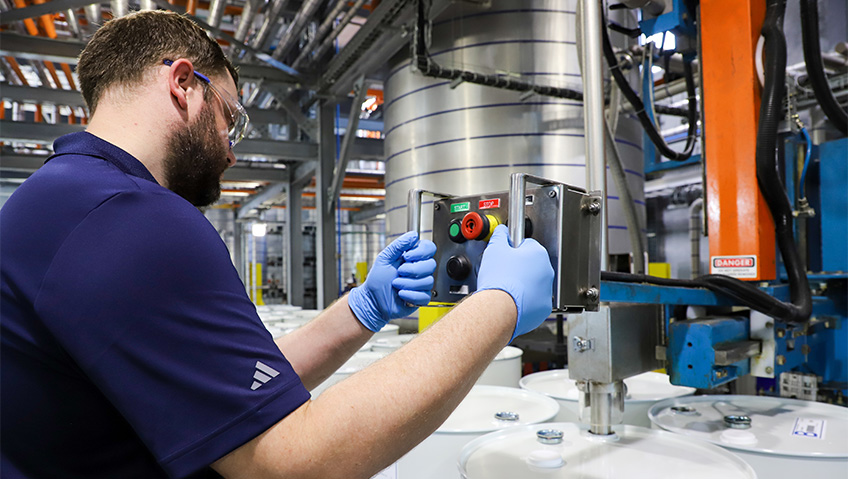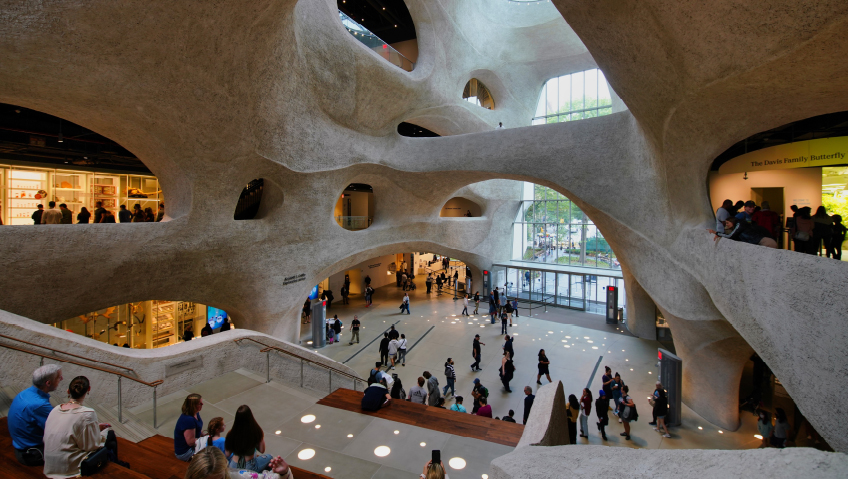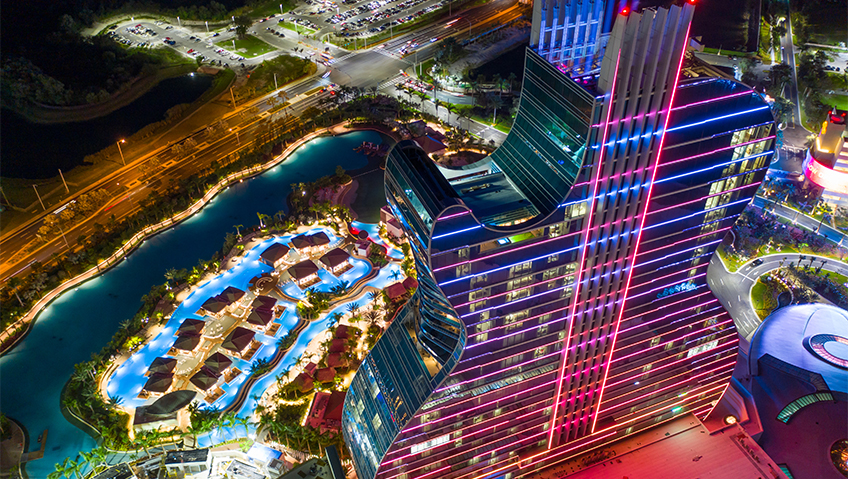Chances are, most people have been to a zoo, museum, or amusement park and have been blown away by the detail and accuracy of the artificial habitats, exhibits, or experiences within. The finer details of these settings elevate the user experience by transporting them to a different place or time, and more likely than not, COST is behind some of the best artistry of this kind—art that mimics reality.
COST is an award-winning firm whose theme and specialty construction services and team of expert craftsmen, construction professionals, artists, and partners leverage a variety of innovative materials, technologies, and building approaches—and the power of the creative mind—to bring projects to life.
From its offices located in Florida, Arkansas, and Manitoba, as well as its headquarters in Jackson, Wisconsin—home to a 144,000-square-foot manufacturing facility equipped with the latest tools and technology—COST offers preconstruction, fabrication, construction, modeling, and artificial rockwork services for clients around the world.
No monkeying around
Since 1957, COST has provided highly specialized construction services that are fueled by a deeply rooted knowledge, carefully honed skill sets, and the ability to execute on a client’s vision with accuracy and attention to detail. This is the foundation upon which the company was founded and with which it continues to blur the boundaries between imagination and reality today.
The firm was established when John Stanwyck’s contracting company was hired to perform work for the Milwaukee County Zoo. The zoo was interested in new cages that were less institutional and more natural for the animals. Selected for its proficiency in concrete, COST was able to replicate a naturalistic habitat that went beyond the client’s expectations and set the stage for the future.
One project led to many, and the COST name and brand quickly became synonymous with exquisite artistry and an unmatched attention to detail that set its work apart in emerging markets.
Soon, COST was a partner of choice for theme park projects, resorts, golf courses, casinos, and other projects that are designed with structure and aesthetic function at the fore and fueled by an unwavering passion for the work being done.
From Marketing Manager Jared Stanwyck’s perspective “Our diverse industry involvement and unique projects consistently fuel our passion and engagement. Personally, my love for animals makes working in the zoological sector incredibly rewarding. Creating stimulating habitats that teach the importance of conservation provides a sense of purpose. Similarly, creating immersive experiences in theme parks is just plain fun.” Acknowledging that it takes a village to bring projects of this magnitude to life, Stanwyck emphasizes the importance of partnership and collaboration in the work that COST does.
For Vice President of Sales Jeffrey Sheiber, “It’s having those effective team members that we’ve gone to war, gone to battle with, and who know what to expect to bring those projects forth which has really been a hallmark in the company’s growth and allows us to bring these awe-inspiring projects to the marketplace.”
He adds that COST looks to collaborate with people who “have the same type of work ethic and want to do good for society and leave awe-inspiring moments behind for the general public. That is what we’re striving for.”
Seeing is believing
COST’s portfolio boasts countless projects that demonstrate artistic capabilities and innovative construction practices that you simply must see for yourself, as photos cannot do the work justice.
An exemplary project that was made possible because of COST’s specialized knowledge and unique design-assist expertise is the Richard Gilder Center for Science, Education, and Innovation at the American Museum of National History in Brooklyn, a project that blended art and engineering. The new wing of the museum spans 230,000 square feet and offers 33 individual connections across four levels to 10 other buildings. But beyond function, it was inspired by the weathered forms of slot canyons—no easy feat, but one that would become an architectural marvel.
The rocklike interior of the structure, which includes an atrium in the heart of the building, is flanked by undulating walls accented by skylights that allowed natural light to shine through into the cavernous space. The light softly reflects on the variegated colors of sand that cascade along the rock walls and leave visitors wondering if it is real or not.
COST achieved this look, which served both a structural and aesthetic function, with shotcrete, which is typically used to create the forms seen in pools and skateparks, as well as the application of a lighter concrete to capture the color and texture of the real canyon rocks.
This project went far beyond decorative theme work to demonstrate why COST is a partner on some of the highest profile projects around the world. From the design stage to the engineering and fabrication, which included over 900 custom pipe forms and 453 tons of rebar, much of which was fabricated at its Wisconsin facility and shipped to Brooklyn, it is a true work of art.
Part of the reason for the project’s success was the team’s ability to offer a proof-of-concept sample using 3D modeling, which Sheiber credits with ensuring accuracy in terms of the color, texture, and overall look. As he notes, “The devil is in the details.”
Some of the details he is referring to are the logistical challenges associated with transporting materials into the heart of Brooklyn—not a simple task given the population density and limited space. “It was a challenging project and the inner workings of that were not easy, but I think our ability, our craftsmanship, and our workmanship, just the ability to stay true to the project, helped us persevere.”
Another project where COST pushed the envelope from a design and execution standpoint is the Kingdoms of Asia exhibit at Fresno Chaffee Zoo. On this project, the company impressively delivered on an aesthetic, architectural, cultural, religious, and historic level.
“The attention to detail, particularly in Kingdoms of Asia, made that project truly remarkable,” Stanwyck tells us. “The focus on cultural and ecological accuracy was exceptional. Our goal was to capture the essence of various Asian regions, from the architecture to natural landscaping, creating an educational and surreal experience for all visitors.”
The project was inspired by Cambodia’s 12th century Angkor Wat temple and was informed by a cultural advisory committee representing Cambodian, Thai, and Hmong people. This is the degree to which COST is committed to executing a vision: the firm takes great pride in its ability to listen and communicate with all project stakeholders.
To ensure that the outcome matched the vision on this project, COST created a scale model that showcased the attention to detail it would employ. From the strangler fig roots that entwined the structure to the animal exhibits, the visitor experience is seamlessly integrated into the Asian façade.
Transporting people to other places and times is a consistent theme in the work that COST undertakes. This is also true of the Galapagos Islands exhibit at the Houston Zoo, which was a first-of-its-kind exhibit that brought the unique landscapes, oceanic habitats, and endemic species of the Galapagos region to the U.S.
The exhibit was part of the close to the Zoo’s centennial celebrations, its $150 million Keeping Our World Wild Centennial Capital Campaign, which was launched in 2018 and endeavored to promote conservation and education through the immersive experiences created. The Galapagos exhibit features Humboldt penguins, California sea lions, giant tortoises, and many other diverse species that are indigenous to the region to give visitors a firsthand look at the ecosystem upon which they depend. COST expertly crafted that ecosystem and all its complexities for visitors to enjoy and learn from.
Diverse and competitive
Whether it is a highly complex project or a drop and pick order that is shipped around the world and installed on site, COST is in the business of bringing ideas to life and elevating user experiences beyond imagination. Quality and attention to detail are the standard, and part of maintaining this level of quality and delivery is the firm’s ability to strengthen itself from within by ensuring it has the right team and partnerships in place.
“We continue to look for those kinds of individuals as needed to supplement our staff with some of the artisans, the sculptors, the painters, and the carvers, so we’re always looking to add additional talent,” explains Sheiber of COST’s efforts to seek out new visionaries to support its efforts.
He adds, “We like working hand in hand with other design firms, other architects, other tradespeople just to supplement ourselves because we are very refined in what we do. So we rely on other people to supplement with lighting, sound—things that we don’t necessarily do but we know it’s an important facet of the story and project.”
With this level of understanding of the value and uniqueness of the skill sets that are paramount to its (and its clients’) success, COST takes great effort to develop and grow talent internally while creating new talent pipelines to ensure that its competitive edge is not lost with attrition. For Stanwyck, a big part of this strategy to protect institutional memory is promoting from within. “We love seeing our employees develop and grow and we do everything we can to foster it,” he shares.
He adds, “Because [the work] is so niche, so specialized, we’re trying to not only ensure that knowledge is not lost, but to maintain it and build upon it, foster and grow it within new staff; that is essential. “There aren’t many people who do this type of work, so finding and cultivating the best possible candidates is essential. The talent and dedication of our team are what truly set us apart.”
To this end, efforts are also being made to ensure the next generation of craftspeople and artisans are aware of the opportunities available to them at COST. This includes working with schools and other agencies to develop internship programs to ensure that there is a steady flow of talent to sustain demand.
This investment in its people, as well as its commitment to adopting the latest technologies, materials, and techniques, will all but guarantee COST’s competitiveness long into the future. The team’s carefully curated blend of artistry and skill will continue to result in unique and immersive experiences that blur the boundaries between imagination and reality.

